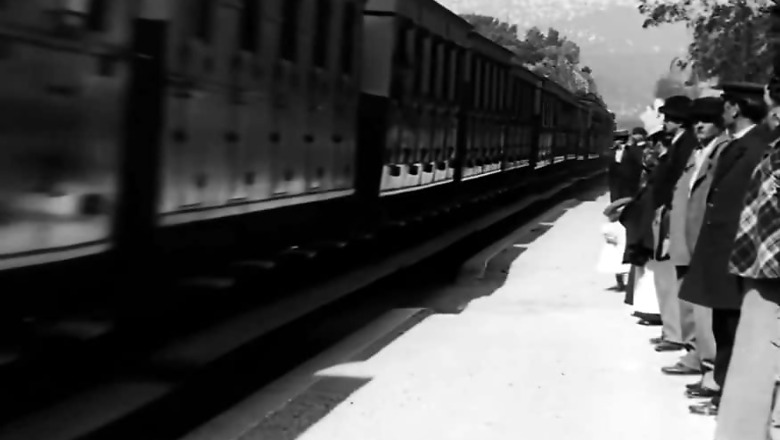
views
To anyone that has studied films, the earliest short films, which were actually more like short video clips, remain a matter of great intrigue. The same applies for the film L’Arrivée d’un train en gare de La Ciotat, or The Arrival of the Train (as it is popularly known in English), which was filmed back in 1896 by the pioneers of cinema, Auguste and Louis Lumiere. While it was a fascinating piece of work back then, it feels difficult to connect with today, and at times even looks comical. (Majorly) improving this, one Denis Shiryaev used some neural network artificial intelligence upscaling algorithms on the footage and turned it into a footage that streams at 4K resolution, 60 frames per second. The result, needless to say, is quite breathtaking. Before we get to the new, improved footage, here’s a look at what the original film was.
As compared to the original footage, which was shot by a primitive camera that could process 16 frames per second of film material, the upscaled film looks like a gleaming piece of interjection in a Quentin Tarantino movie, shot in high contrast, true greyscale composite film on 8K oversampling. Even the characters do not look out of place – in fact, it looks like the perfect setting for a high action period drama set in the Wild, Wild West. Take a look at the improved piece here:
There is, of course, certain issues with the footage, which gradual improvements to AI and neural networks will almost certainly rectify in future. Barring the few interpolations and video artifacts left in the footage, the footage looks like it could have been shot just yesterday, as part of some new arthouse project. This goes on to show the prowess of AI and neural networks, and actually highlights both aspects – the bad and the good. While the good would entail the use of neural network algorithms to rescue old and rare films that might not last long, the bad comes with how these tools can be used to effectively doctor footage, in process giving rise to what we today know as deep fakes.
Legend says that the film, which was the first time that most of mankind saw images move on screen, led to the audience running away scared thinking that the train was actually going to run them over. However, after 124 years of continued innovation, we now stand at a point where 8K video recording is commercially and practically feasible, and frame rates go all the way up to 1,000fps in user cameras. Advanced technologies such as the Gigapixel AI and DAIN tools used by Shiryaev here are today acting like a bridge between the past and the future, one which can give film restoration projects a great, new, powerful tool.

















Comments
0 comment